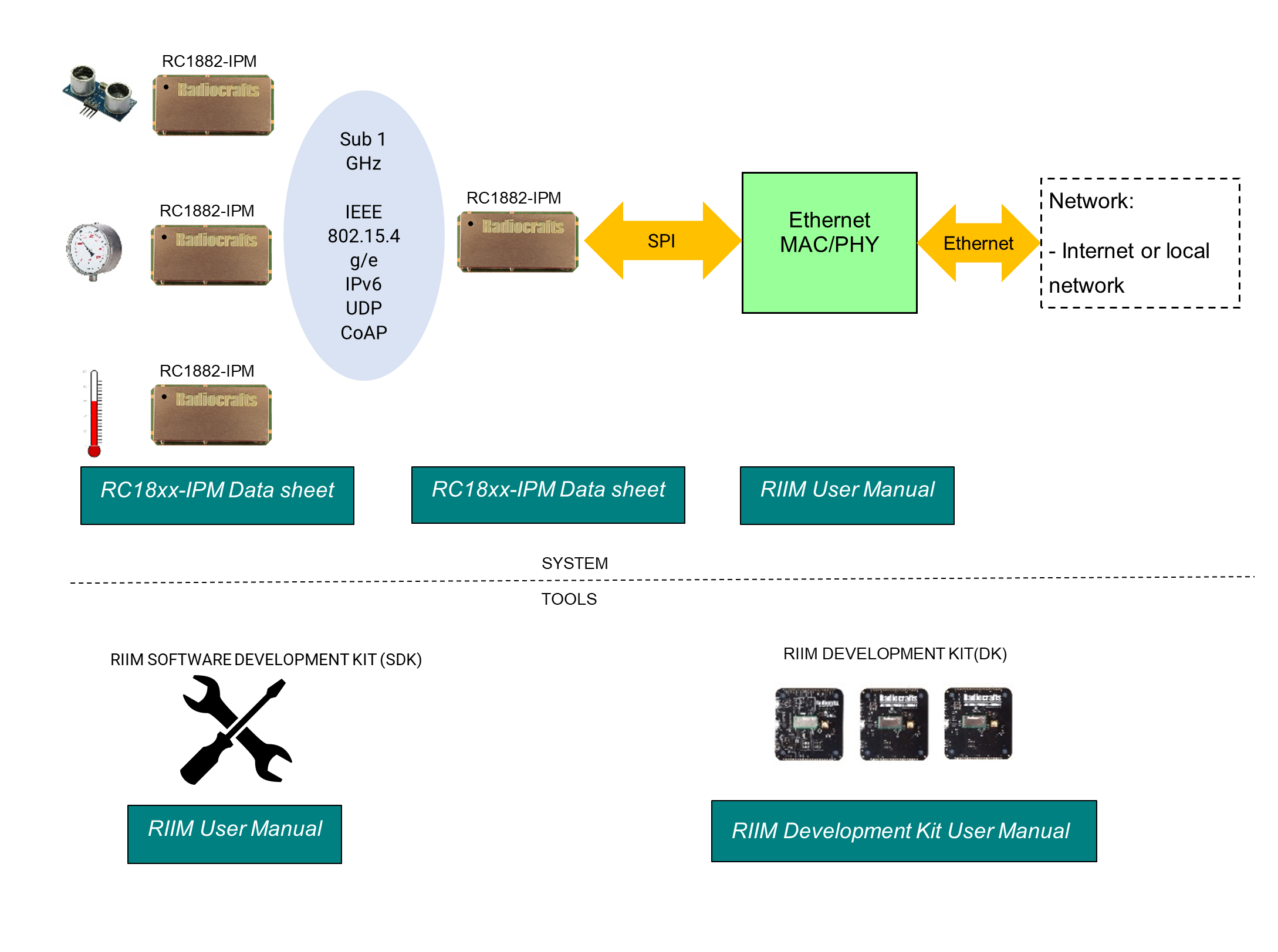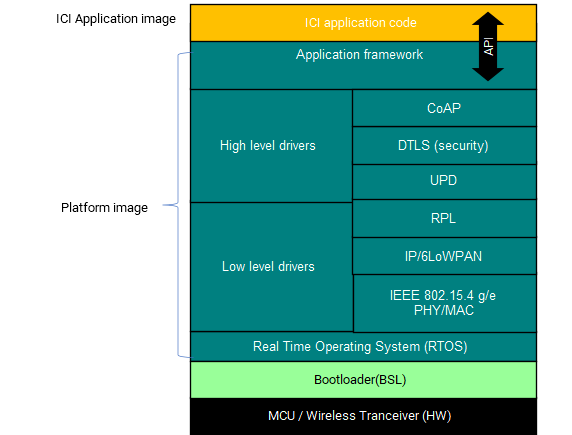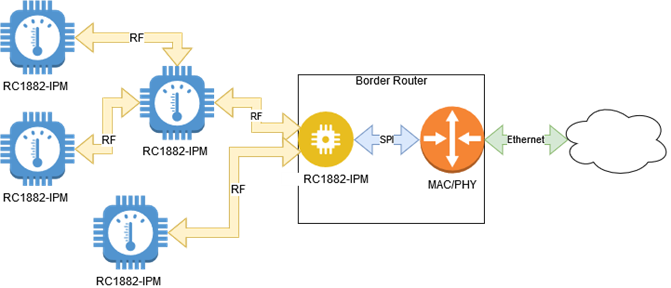Introduction¶
The RIIM network consists of these key elements
- The RIIM SDK
Software development kit with ICI application frameworks and tools for creating and uploading end ICI applications to the RC18xx-IPM modules
- The RC18xx-IPM module
The RC18xx-IPM module can be configured as Border Router, Mesh Router or Leaf node
As a Border Router it acts as the base of the mesh network. It can connect to an external network via Ethernet or custom user ICI application on other interfaces such as UART
As a Mesh Router, it’s able to transport packets in the RIIM mesh network
As a Leaf, it’s not able to transport packets to other nodes except its parent. This mode uses the least amount of energy
All node configurations require an ICI application for RF and interface configuration and the user application. The same RIIM Software Development Kit (SDK) is used to create the ICI application for all node configurations
Below is an illustration of the different elements and the documentation available

RIIM network system and documentation overview.¶
RIIM description¶
Radiocrafts Industrial IP Mesh (RIIM™) is a wireless sensor network that can send and receive data directly on the internet. This makes it easy to connect to cloud services and other devices. IP addressing is used to address each module from anywhere and vice versa. The IP-Mesh system consists of the RC18xx-IPM module. This module is versatile and can be used as network Border Router, Mesh Router and low-power Leaf node. Radiocrafts also provide a finished deployable gateway, the RIIM Border Router: See https://radiocrafts.com/ for details on the deployable RIIM Border Router and an overview of the RIIM ecosystem.
Sensors can be connected to the RC18xx(HP)-IPM using common interfaces such as I2C and SPI, and the user can interface them through an easy-to-use programming API named ICI (Intelligent C-Programmable Interface). For ICI application development, Radiocrafts provide a complete SDK (Software Development Kit) with firmware, tools, documentation, and examples for sensors to minimize the work needed for development. The API also provides the possibility for the user to develop low-level custom drivers and can be used to implement arbitrary functionality. The modules are inherently low power modules with automatic power save functions enabling battery operation.

System overview.¶
RIIM mesh network¶
The following figure shows a typical Wireless Mesh Network. The network is self-forming and self-healing, so the user doesn’t need to configure anything; the network will form itself. The network is a tree structure, where one node (the Border Router) is the root node, and the others (child nodes) are branching out from the root. Multi-hop is supported, so it’s not necessary for a mesh router or a leaf node to have a direct link to the Border Router.

Example RIIM Network.¶
Border routers¶
A complete deployed solution will consist of at least one Border Router. The rest of the RIIM network will consist of Mesh Router and Leaf nodes (collectively referred to as child nodes). It’s not possible to use multiple Border Routers in the same network simultaneously. However, it’s possible to have a backup border router and a contingency plan in case the border router fails. This means that though ICI one can verify connection to border router and if this connection is missing for a period, the backup border router can be used. This eliminates single point of failure.
SDK and platform versioning¶
The SDK and Platform version numbers are based on Semantic Versioning as described here: https://semver.org/ This means that ICI applications written for a particular MAJOR version won’t be compatible with other MAJOR versions. ICI applications with MINOR versions are usually forward compatible with newer MINOR versions, but care should be taken to read the change notes and retest the software.